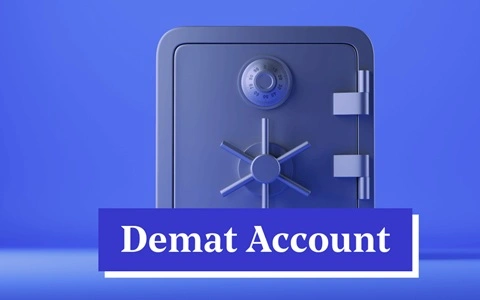Well, for those of you who don’t know, NEFT or National Electronic Funds Transfer was a system that was introduced way back in 2005 by the Reserve Bank Of India. And, among the various fund transfer methods, like UPI, NEFT is still something that millions of people rely on in the country. And if that has got you thinking what’s really up with this whole NEFT thing, or is it even any better than the modern fund transfer method? If that’s the case, then keep on reading because today we will delve into the possible advantages and disadvantages of NEFT. So yeah, here we go.
| Advantages of NEFT | Disadvantages of NEFT |
| Round-the-Clock Availability | Non-Instant Transfers |
| Easy on the Pocket | Extra Charges Here and There |
| No Extra Fees, Seriously! | Limited to Domestic Use |
| Widespread Reach | Complexity and Accessibility Issues |
| Flexible Transfer Limits | Banking Hours Constraints |
Advantages Of NEFT

First, why not take a detour and discuss the positive side of things about NEFT?
1. Always Up and Running
You know what’s super cool about NEFT? It’s always there when you need it. That’s right, it’s available 24/7. This is a big deal in our world that’s always connected, where you might need to handle money stuff any time. So, if you’re stuck in a financial pinch at odd hours, NEFT’s got your back.
2. Easy on the Pocket
Here’s another thing about NEFT that’s gonna grab your attention: it’s super cheap. A lot of banks in India let you use NEFT for next to nothing or even free! This is perfect for anyone who’s moving money around often and doesn’t wanna see their wallet get thinner just because of transaction costs. NEFT being so budget-friendly is a big reason why so many people are into it. It means sending money doesn’t have to eat into your savings.
3. No Extra Fees, Seriously!
We all get turned off by those sneaky extra fees in online banking, right? Well, guess what, NEFT is different. When you use internet banking or those banking apps on your phone for NEFT, they don’t slap you with extra charges. Take ICICI Bank’s iMobile Pay, for example, they let you do NEFT stuff totally fee-free. This no-extra-charge thing makes NEFT way more appealing and gets more people to try out digital banking. It’s a win-win, you save money, and we all move a step closer to a world where everyone’s comfy with digital money moves.
4. NEFT is Everywhere!
Can you believe it? NEFT’s got this massive network that’s all over India, connecting tons of banks. It’s more like a super highway for sending money around. So, whether you’re chilling in Mumbai or hanging out in a small town, NEFT’s got you covered for your money moves.
5. Send a Little or a Lot
NEFT’s super flexible when it comes to how much cash you wanna move. Whether you’re just sending a tiny bit, like just Rs. 1, or a big stack of cash, NEFT can handle it. That simply means that no matter whether you are a small business, an individual, or a huge corporation right here in India, you can easily rely on NEFT for money transfers, no matter how big or small the amount is.
Disadvantages Of NEFT
Alright, onto the actual downside of this fund transfer system or method:
1. NEFT’s Wait Time
Can you believe it, NEFT doesn’t do instant money moves? That’s right, unlike some super-fast transfer ways, NEFT takes its time. It processes your cash in batches, not right away. So, you might have to hang tight for a few hours, or sometimes, even till the next day, to see your transaction done. This can be a real pain, especially when you’re in a hurry. Like, imagine you need to quickly send money for something urgent, NEFT’s slow pace could really make you angry.
2. Extra Charges Here and There
NEFT is usually a wallet-friendly option, but yeah, it’s not always on the house. Some banks might ask for a little extra for NEFT transactions, particularly for certain kinds or when you’re moving big amounts. So, while a bunch of banks give you NEFT for free, others might slip in small fees. These charges, though tiny, can add up if you’re a regular NEFT user.
3. Just for Domestic Transfers
Another big thing about NEFT? Well yeah, it is all about domestic transfers, only within India. So, forget about sending money overseas with NEFT. If you’re someone who often needs to move cash internationally, you’ll have to look elsewhere because NEFT isn’t your thing for global transactions.
4. It’s Kinda Tricky to Use
Yeah, the thing with NEFT is that it can be a bit of a headache, really. You know, for those who aren’t that great with digital things or don’t get the whole electronic banking scene, NEFT can be a tricky thing to understand or even use. That is pretty understandable when you have already used NEFT like you need a bunch of details like the person’s bank account number, their branch stuff, and that IFSC code. That’s a lot to remember, right? And for folks who find the digital world a bit daunting, all these steps to use NEFT can feel like a huge wall blocking their way.
5. Timing’s a Bit of a Bummer
Now, even though NEFT is supposed to be up and running 24×7, there’s a catch. Some parts of how it works still play by the old-school banking hours. And yeah, it means that sometimes, the speed of your transactions gets slowed down. Like, if you send money after the day’s last batch, guess what? You’ll have to wait till the next business day to see that transaction go through. Sure, NEFT is always there, but this timing thing can really put you off, especially if you’re trying to move money around when the banks are off or it’s the weekend.
Conclusion
There you have it. Now you might be feeling a lot clearer in your head about this whole NEFT fund transfer thing. Right? Well, here we just scratched the surface, there is actually a lot to learn about NEFT, and for that, we’ll advise you to dig a little deeper on your own.
Anantha Nageswaran is the chief editor and writer at TheBusinessBlaze.com. He specialises in business, finance, insurance, loan investment topics. With a strong background in business-finance and a passion for demystifying complex concepts, Anantha brings a unique perspective to his writing.


